Don’t Fund Bullets Killing Iranians - Exiled Prince To Biden
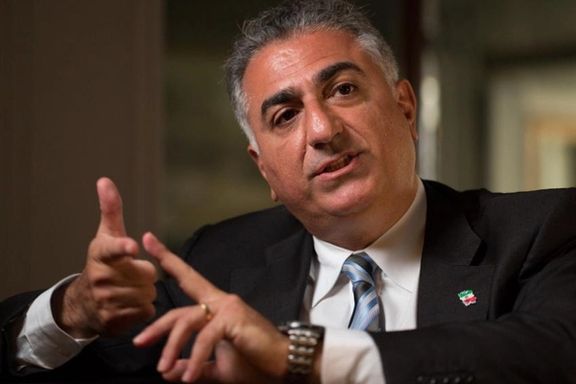
Iran's exiled Prince Reza Pahlavi has called US President Joe Biden not to enter an agreement with Tehran that would financially benefit the Islamic Republic’s repression machine.

Iran's exiled Prince Reza Pahlavi has called US President Joe Biden not to enter an agreement with Tehran that would financially benefit the Islamic Republic’s repression machine.
In a tweet, he said that the Islamic Republic is firing on students at Tehran’s Sharif University of Technology, “yet reports indicate the US may send this criminal regime billions yet again.”
Sunday night, an organized violent government attack on protesting students in Tehran’s Sharif University heightened tensions in Iran that can lead to more unrest. After the fog of battle cleared Monday morning, the extent of what security forces planned and executed in Sharif University became clear. The emerging picture shows maneuvers and deception by security forces to corner the students and beat and arrest many.
Addressing President Biden, he said that “you have yet to help our people. At least don't fund the bullets piercing the hearts of our youth!”
Earlier in the day, Pahlavi had urged the US and other Western nations to do more than provide “moral support,” saying that “As Iranian workers strike to protest and cripple this regime, the West can support them by facilitating the creation and administration of strike funds for their families.”
The latest round of nationwide protests in Iran appears to be different from the protests that have rocked the Islamic Republic since 2017 in more than one way.
The protests, sparked in Tehran late evening on September 16 following the death in custody of Mahsa Amini, 22, are dominated by women and youth yearning for freedom and equality.
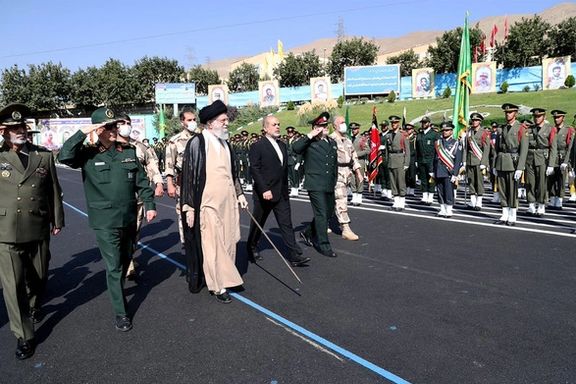
State media quoted Iran’s ruler Ali Khamenei as saying that protests were planned and not staged by "ordinary Iranians", in his first reaction to ongoing unrest.
Khamenei’s reaction calling protesters “rioters” and praising security forces are similar to his comments about anti-government protests in the past, such as in January 2017 and November 2019, when security forces killed at least 1,500 people.
The aging 83-year-old Khamenei who has ruled for 33 years, said, “I am saying explicitly and clearly, riots and insecurity was planned by America and the usurper, fake Zionist regime.”
In fact, protests began in mid-September after a 22-year-old woman, Mahsa Amini was killed by heavy blows to her head while in the custody of hijab police. Her death first led to protests in her native Kurdish region of western Iran and then reached the capital Tehran and other cities two days later.
As happens often in Iran, officials tried to portray her death as the result of illness, and no one has been held responsible after the initial incident on September 13.
Khamenei’s reported appearance Monday at a ceremony came after his two-week total absence from the scene that had led to speculations about his health. He had been reported to be unwell even before the protests.
Although state media extensively quoted Khamenei and published a few photos of the ceremony, no video was released, which could have presented a more solid proof of his health status.
Before his appearance on Monday, some activists on social media were commenting that Khamenei’s supporters might be wondering where their leader is. But Iran’s ruler in the past has often waited to see if his forces are on the verge of victory before showing up and condemning the protests. This time he apparently could not wait any longer.
Protests in nearly 100 cities and towns in the past two weeks have been met with violence by security forces and 133 protesters have been confirmed dead by a human rights group, but so far, the government has not used overwhelming military force to kill demonstrators.
Most of the anger during the protests has been directed at Khamenei himself, with frequent chants of “Death to the dictator” and “Death to Khamenei”. He is seen as presiding over a pyramid of repression by clerics and the loyal Revolutionary Guard, with endemic corruption everywhere in the government.
Khamenei on Monday also praised security forces and cadres loyal to him, although he also pretended that the Iranian people oppose what he described as a conspiracy to foment protests. He also repeated unfounded allegations by his loyalists that protesters “burned Qurans”, forced women to take off their hijab and attacked mosques.
Khamenei also said that Mahsa Amini’s death was an excuse and even if she had not died “they would have created another excuse…to sow insecurity in the country.”
While the United States and many other countries have condemned Mahsa Amini’s death as well as discrimination and violence against women in Iran, Khamenei dismissed the criticism. He also dismissed US statements that Washington has no intention of attacking Iran or changing the regime.
“Plotting and actions by the enemies show their real self. The same enemy that in diplomatic remarks says we have no intention to attack Iran or to change its regime…pursue plots to create riots,” Khamenei said.

An organized violent government attack on protesting students in Tehran’s Sharif University Sunday has heightened tensions in Iran that can lead to more unrest.
After the fog of battle cleared Monday morning, the extent of what security forces planned and executed in Sharif University became clear. The emerging picture shows maneuvers and deception by security forces to corner the students and beat and arrest many.
The university’s Islamic Student Association Monday issued a call for a general, national student strike and early reports and images already show protests in many universities including in Esfahan, Mashhad, Sanandaj, Semnan and Kermanshah.
After more than two weeks of unrest, Iran’s hard-liners loyal to Supreme Leader Ali Khamenei, who is often the target of derogatory slogans by protesters, are simply caught in a typical ‘no-win’ situation. The more they crack down, the more anger will grip young people who drive and lead the protests. And if they show little reaction, crowds will become more emboldened and perhaps march on government buildings.
Sharif University students had gathered Sunday morning inside the main gate chanting slogans when a group of pro-government Basij militants showed up and taunted them. Student slogans became more radical to the degree of profanities against Khamenei, who is the favorite target of protesters.
At this point students decided to relocate to another gate, because they knew that cameras were installed at the main gate which could be used to identify them. Once they reach the new location; they see that security forces were waiting for them right outside the campus in the surrounding streets. Security forces start firing shotgun pellets and paintball guns at the students and arrest and injure several.
At this point university officials shut the gates not to allow security forces inside the campus, which is prohibited by law. University officials and guards tell the students to exit the campus through a multi-story parking. Once student reach the first and second levels of the parking, they find themselves surrounded by plainclothes armed vigilantes, who start firing shotgun pellets and tear gas at the students. At that point students began running at all directions. The agents arrested around 30-40 students, whose fate remains unknown.
Student retreat inside the buildings with no way to leave the campus as hundreds of security forces had surrounded the university. These events took hours until finally at night the minister of higher education Mohammad Ali Zolfigol arrives to defuse the situation. He gets into an argument with security forces asking them to allow the students to leave the campus unharmed.
After that the minister meets with the students in an auditorium where he admonishes them and by some accounts insults a professor who was all along trying to defend the students. Finally, late at night students agree to leave the campus after promises of safe passage, but some reports say security forces make more arrests. In total, unconfirmed reports speak of 100 students having been detained and sent to an unknown location.
Iranian universities have been the bastion of opposition throughout Iran’s recent history, and many have been killed during protests by security forces. Once university students are galvanized it would be hard to subdue them and a new generation opposition activists will emerge.
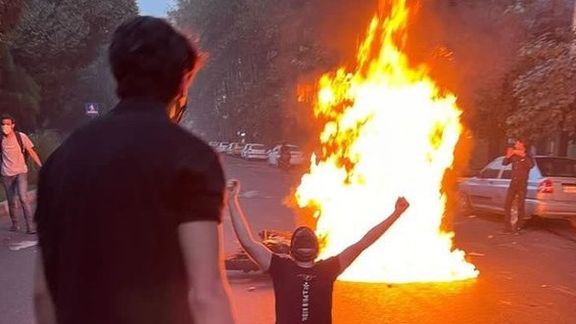
While assessments by Iran’s intelligence and security organs show serious dissatisfaction among young people, they still call for a harsh response to protests.
Revolutionary Guard (IRGC) mouthpiece Javan newspaper acknowledged in an October 1 report that "based on demographic intelligence about the protests, over 93 percent of those taking part are young men and women below the age of 25." The IRGC called them "a younger generation of rebels."
Meanwhile, this assessment has revealed that despite gender segregation rules that strictly separate young men and women, some 90 percent of protesters join the rallies as "couples".
Earlier, the IRGC-linked Fars news agency had also reported that protesters are "young adults who are not committed to religious values."
On October 2, IRGC Commander Hossein Salami also admitted that a new generation of protesters has taken to the streets of Tehran and other Iranian cities during the past two weeks. Meanwhile, he acknowledged that young Iranians "are not interested in the IRGC" and what it does. Nonetheless, he said: "We defend everyone even those who do not like us." However, the Guards were not seen defending anyone during the past weeks and also in previous rounds of protests. Instead, Iranians have seen them using violence against protesters.
During the past two days, Salami has threatened "to take revenge" from the people in Baluchistan province where tens of locals were killed by the IRGC on September 30 and its intelligence chief in the province was allegedly killed by protestors on the same day. The hard-line Parliament (Majles) has also called on the IRGC to take revenge for the protests.
Meanwhile, an Intelligence Ministry report repeated typical rhetoric that the British and Saudis as well as other countries are involved in the protests behind the scenes. The report said that intelligence officers accompanied the police and Basij militia in the suppression of the protests and gathered intelligence about the organizers and supporters of the protest movement.
The Intelligence Ministry claimed that it has arrested 92 monarchists, 49 members of the Mojahedin-e Khalq (MeK) organization as well as 77 members of militant Kudish parties on both sides of the Iran-Iraq border.
The Ministry also claimed that it has arrested five members of an un-named Takfiri group who were in possession of 36 kilograms of explosives. The group, the ministry claimed had plans to assassinate a state official and bomb religious centers in Mashhad and Shiraz.
In an interesting but otherwise unproven claim, the Ministry of Intelligence said it has arrested 9 German, Polish, Italian, French, Dutch and Swedish citizens in or behind the scenes of the protests. The ministry said that it has issued warnings to a number of foreign countries' embassies in Tehran. However, there are no independent confirmation of the alleged arrests and warnings.
Responding to these claims, Paris based Muslim scholar Mohammad Javad Akbarin wrote in a In an October 2 tweet: "The Iranian government has blamed "Citizens of Germany, Poland, Italy, France, Holland, Sweden, as well as Bahais, the Mojahedin-e Khalq (MeK), the Pahlavi dynasty and others" as those who have conspired to bring about protests in Iran. Yes! It is only this ugly government that is good!"
Meanwhile, reformist commentator Abbas Abdi also responded to the ministry's claim, saying that, "Iranian hard-liner neo-conservatives reactions to the protests that followed the death of Mahsa Amini reveals nothing but their ignorance, sorry state and weakness.” Abdi further charged that the current protest and those in 2018 and 2019 are the outcome of provocations made by hard-liners.
Abdi noted that they never assume any responsibility for what they have done and do not want to be accountable for their own behavior, which is the underlying cause of dissent and protest, and instead, they blame others for their own actions.
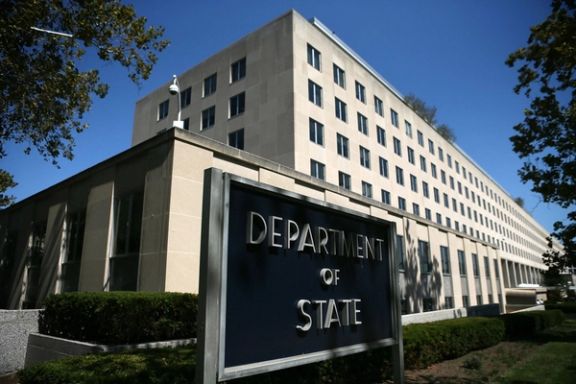
The United States said Sunday that reports from Iranian sources of a transfer of funds related to the release of Bagher (Baquer) Namazi and to a furlough for his son Siamak Namazi are categorically false.
In response to Iran International, a US State Department spokesperson said that "Any claim that Iran's lifting of a travel ban on Baquer Namazi was part of a deal for a transfer of frozen funds is categorically false,” adding that “We understand that the lifting of the travel ban and his son’s furlough were related to his medical requirement.”
“Baquer Namazi was unjustly detained in Iran and then not permitted to leave the county after serving his sentence, despite his repeated requirement for urgent medical attention,” the source noted, saying that “We continue to have indirect discussions on possible humanitarian arrangements to facilitate the urgent release of the remaining US citizens wrongfully detained by Iran, but we have nothing further to announce at this time."
Earlier in the day, Tehran claimed that it will receive $7 billion of its frozen funds for a prisoner exchange deal with the United States, but it did not specifically claim that the money is related to the Namazis.
United Nations spokesperson Stephane Dujarric announced about Namazis in a statement on Saturday, but the Islamic Republic periodically announces that release of its frozen funds is imminent to prop up its currency.

Protests resumed on Sunday after the busiest day of demonstrations both in Iran and abroad on Saturday, with parliament and IRGC officials trying to have a say.
The 17th day of nationwide protests began with the chief commander of the Revolutionary Guard (IRGC) trying to sound conciliatory with the youth who have been the driving engine of the protests.
In a government ceremony, Hossein Salami said, “I like the youth protesting in the streets” and “they are my friends.”
However, by nightfall, security forces controlled by mainly by the IRGC surrounded protesting students in Tehran's Sharif University and at least 100 were arrested while many were beaten by security forces. Details are unclear and more will emerge in coming days.
While security forces linked with the IRGC have been firing at protesters for two weeks, Salami said, “When we defend, we defend for everybody’s sake, even for those who don’t like us because they have fallen victim to the enemy’s deceit and seduction. But we like them.”
In effect, the IRGC, which has so far not used overwhelming military force against the people, acknowledged the role of the younger generation – or Generation Z – in the protests.
Earlier, Iran International had noted that this generation seems fearless and free of traditional religious and social restrictive norms, demanding freedom after their parents endured four decades of an authoritarian Islamic rule.
Iran Human Rights group based in Norway said on Sunday that it estimated 133 protesters have been killed so far, although no final figures are available because the government never announces the real number of casualties or those arrested.
Members of parliament dominated by hard-liners held a session on Sunday and started chanting against "seditionists", and expressing gratitude to security forces.
The chairman of the armed forces general staff, Hossein Bagheri also pitched in saying that “Our university students should not be politicized, become partisan and get carried away with [political] currents.”
But these statements would hardly impress the protesters, who have seen the Islamic Republic politicize everything, even some minute details of people’s personal lives. All universities have loyalist Basij student groups, who control how other students dress, speak and act.
Students in several universities across the country continued their strikes and protests Sunday, which is a weekday in Iran, and high school students also joined civil disobedience, with removing their headscarves and shouting slogans in the streets, after leaving the school grounds.
There were protests in some parts of Tehran and Esfahan in daytime, as larger gatherings take place in the evenings and through the night.
Our coverage ended at 00:45 Iran time and covered more than 7 hours of events nationwide. Below are news and videos of those events.
-----------------------------------------------------------------------------------------------------------------------------
Last update - Details of events in Sharif University remain unclear. What is certain is that many students were arrested and taken to a detention center although thousands of protesters rushed to streets surrounding the university and cars honked horns to try to prevent a tragedy, such as summary killings or physical violence. More details will emerge in the coming days.
The latest video below shows them being put on vans to be taken to prison.
-----------------------------------------------------------------------------------------------------------------------------
UPDATE on Sharif University - Crowds hearing the news about students being surrounded and in danger on campus gathered outside the main gate of the university at around 22:00 local time. But reports say that security forces or vigilantes began attacking the dormitories. They were firing guns at the windows while students were in the dorms.
The video below gives a sense of the situation.
Another video showing security forces on motorcycles arresting people and students and taking them away. One security guy fires at the car that is recording the video.
-----------------------------------------------------------------------------------------------------------------------------
A grave situation has developed in Tehran's Sharif university, where security forces boxed in hundreds of students into one part of the campus not allowing them to leave. As according to the law police or any armed force cannot enter a university, regime vigilante forces arrived and invaded the campus. The whole situation remains murky but reports say 100 students have been captured.
The video below shows the mayhem outside the university.
-----------------------------------------------------------------------------------------------------------------------------
People shouting "Death to the dictator" and "Death to Khamenei" from their apartment windows in the Ekbatan district of Tehran.
-----------------------------------------------------------------------------------------------------------------------------
Protesters have been on the streets in Kermanshah, western Iran, all evening and early hours of the night.
-----------------------------------------------------------------------------------------------------------------------------
Protesters in the mainly Kurdish city of Sanandaj in western Iran are burning a billboard displaying a government message. The first protests on September 16 started in Kurdish areas, because Mahsa Amini, the woman who was killed in the custody of hijab police was an Iranian Kurd. Her death trggered the ongoing unrest.
-----------------------------------------------------------------------------------------------------------------------------
Young protesters in the religious city of Qom are in a running back and forth with riot police on motorcycles in the streets.
----------------------------------------------------------------------------------------------------------------------------
Young people are walking in the streets and chanting in Shahrekord, a provincial city south-west of Esfahan.
----------------------------------------------------------------------------------------------------------------------------
Among all the clever slogans that resourceful Iranians have invented during the protests, the simple chant, "Death to the dictator" remains the most popular. Here, not far from Ali Khamenei's headquarters many are shouting the same slogan.
-----------------------------------------------------------------------------------------------------------------------------
Protesters Sunday evening have gathered in Tehran near a main subway station chanting, "Death to the dictator", while the person sending the tweet says "Whatever you do, don't enter the station."
-----------------------------------------------------------------------------------------------------------------------------
Iran Human Rights monitoring group based in Norway issued a report on Sunday saying 133 protesters are confirmed dead in the two-week-old nationwide protests. With lack of official figures by the government, it is not possible to be certain of the real toll.
-----------------------------------------------------------------------------------------------------------------------------
Iran's security forces seem to be intensifying their crackdown on protesters. They managed to surround a group of students in Tehran's Sharif University, not allowing them out of the campus. They brought in overwhelming force and using shotguns to fire special shells with tiny pellets that wound people. Those injured are than arrested and taken away. Even some professors who were present on the campus were assaulted by security forces.
According to the law security forces cannot enter a university and as a result, eyewitnesses say plainclothes vigilantes might enter and the lives of students might be in danger. Already dozens have been arrested.
This is what the special shotgun shells do to people.
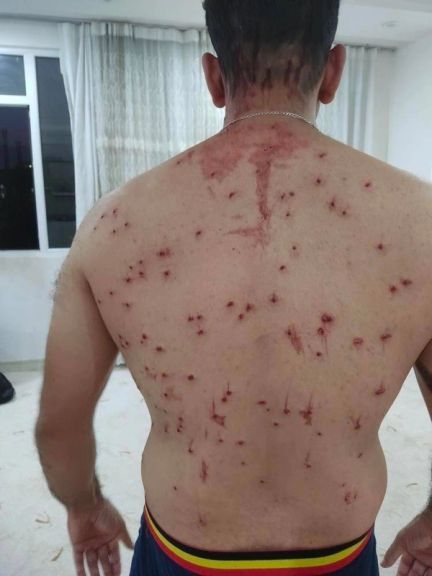
-----------------------------------------------------------------------------------------------------------------------------
The regime reacts to protests by organizing counter-demostrations. This is one such rally in Ferdowsi University.
-----------------------------------------------------------------------------------------------------------------------------
Protests took place in the Shahpur industrial area of Esfahan on Sunday, with demonstrators making fires to block roads.
---------------------------------------------------------------------------------------------------------------------------
-----------------------------------------------------------------------------------------------------------------------------
-----------------------------------------------------------------------------------------------------------------------------
Iran's ministry of communication announced Sunday that social media platforms Instagram and WhatsApp remain blocked due to the protests. Iran blocked these two popular platforms in mid-September in addition to cutting off internet service during most hours of the day. The government wants to prevent news and images of protests from being shared among the people and be seen around the world.
-----------------------------------------------------------------------------------------------------------------------------
Students protest in the University of Kashan, central Iran, on Sunday.
-----------------------------------------------------------------------------------------------------------------------------
We have verified the identity of this officer from Iran's Army Air Force (not IRGC), who is warning police forces not to harm civilians. According to one source who was his student in the past, he was arrested on Sunday, October 2 after issuing his brave message in a very straightforward tone. There have been two other similar videos by air force officers in recent days.
Many Iranians have called on the traditional army to stand on the side of protesters and defend them against attacks by a variety of security forces controlled by the IRGC. But it should be noted that top commanders of the army are mostly IRGC officers.
-----------------------------------------------------------------------------------------------------------------------------
Schoolgirls after leaving classes for the day congregate in the street and burn their hijabs, chanting revolutionary slogans, incliding "Women, Life, Freedom", which has become the defining motto of the protests.
-----------------------------------------------------------------------------------------------------------------------------
Schoolgirls protesting in Karaj, a large city 20 miles west of Tehran on Sunday.
-----------------------------------------------------------------------------------------------------------------------------
---------------------------------------------------------------------------------------------------------------------------